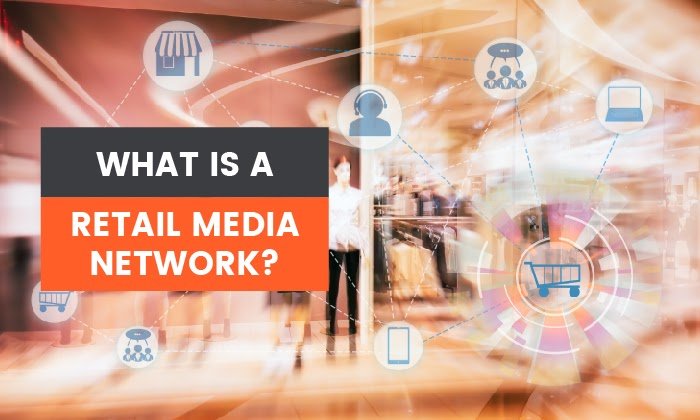The marketing and advertising industry is a fast-paced industry.
With technology evolving rapidly, people have found it more convenient to do their shopping and other transactions online.
With digital interactions overtaking in-person activities, this shift in people’s lifestyles means one thing for businesses — they need to pivot fast. Failure to do so can only lead to losing customers.
Enter retail media networks.
What is a Retail Media Network?
With more and more people shopping online, retail media just makes sense.
But what exactly is a retail media network?
A retail media network is when retailers set up an advertising platform on their website, app, or other digital platforms within their network. This allows the store, and other brands, to advertise to customers on sites like CVS or Walgreens. It’s a form of in-store advertising in a digital format.
Here’s an example from CVS’s homepage. Notice the “sponsored” tag in the bottom right corner — this isn’t just a product listing; it’s an ad from a face mask company right on CVS’s website.

Ads on retail media networks can be displayed on many pages, including:
- The home page
- Category page
- Search page
- Product detail page
This enables advertisers to reach shoppers at the various stages of their buyer journey.
The reason retail media works so well is that shoppers are more receptive to ads when shopping than when they’re carrying out other non-shopping related activities.
Pros and Cons of Retail Media
Retail media is changing the way shoppers and brands interact. But is this new form of advertising and marketing a good thing or not?
Well, let’s take a look at the pros and cons of retail media and find out.
Pros of Retail Media
We’ll start by looking at the advantages of retail media and breaking them down according to the players involved.
For Retailers
The most significant advantage of retail media for retailers is that it creates a new revenue stream. Advertising is big business, and a retail media network enables retailers to tap into this $560 billion industry.
Profit margins on consumer packaged goods (CPG) have taken a tumble in the past few years. The revenue generated by retail media has been a lifeline for retailers looking to boost their profits.
Retailers that leverage retail media have become the new media moguls, thanks to the rise of e-commerce. This has opened up a new world of possibilities in how they can generate revenue.
For Consumers
Shoppers also benefit from retail media in a few ways.
The first benefit is it offers better price control for customers. With retailers generating revenue from ads, they won’t be as quick to raise their prices. An increase in pricing could result in a drop in traffic, spiraling into reduced ad revenue.
Secondly, retail media benefits shoppers by offering a better customer experience (CX). Sure, ads can be annoying. But if done well, they can help shoppers make better purchase decisions. They can also remind shoppers about related products they may want.
For Advertisers
One of the biggest advantages of retail media for advertisers is that it gives them access to first-party data.
First-party data is data collected and owned by the website owner, and in this case, that’s the retailer. It’s clean and more reliable than third-party data collected by other methods such as cookies.
The best part of first-party data is that it’s collected right at the point of sale, giving you better insight into buyer behavior.
Why is this so important?
One word: personalization.
Personalization plays a huge role in designing and executing ad campaigns that convert. To do this, you need accurate data.
Another reason first-party data has become so valuable is because of the impending death of cookies.
For Brands
For brands that advertise on retail media networks, the most significant advantage is that it’s easier to tie ad spend to sales. Because sales happen closer to the ads, it’s easier to attribute a sale to a specific ad and action. This is crucial to strategic decisions such as resource allocation.
Another advantage for brands is that these ads increase visibility, which helps drive sales.
Even though it’s still in its infancy, retail media is already proving to be a powerful form of advertising set to change the future of online shopping experiences.
Cons of Retail Media
With retail media looking so good, could it have any disadvantages?
One of the biggest disadvantages of retail media is that it gives more power to brands that are already big. It creates an uneven playing field for smaller brands that don’t have the traffic, budget, and infrastructure to set up retail media networks of their own.
Another disadvantage of retail media is that it’s a new field that requires infrastructure that most retailers don’t have. Because of that, it’s a learning curve for all the parties involved.
The Rise of Retail Media: Explained
Many brands had already jumped on the digital transformation bandwagon before retail media networks came on the field. They invested in mobile apps where customers could shop for products and get delivery right to their homes.
When the pandemic hit, these websites and apps became instrumental in generating sales for retailers. Research shows that 80% of people are now doing over half of their shopping online. The same study reveals that 60% of respondents said they’d continue shopping online even after the pandemic.
What does this have to do with retail media networks?
Everything.
This shift in traffic to retailer websites and apps birthed a new form of advertising.
That new form of advertising comes in the form of retailer media networks.
In short, this means brands advertising on retailers’ websites and apps. These can be brands that sell directly on the store or brands that want to reach that store’s audience.
Leveraging already warm traffic to create retail media networks is powerful. That’s because these networks benefit everyone involved, from the retailer to the brands advertising to the shoppers.
Brands with Retail Media Networks
Interested to know which brands have their own retail media networks and how they do it?
Let’s look at three brands that caught the shift early and are seeing great results with their retail media.
CVS
Originally known as the Consumer Value Store, CVS has become a force to reckon with on the American retail scene.
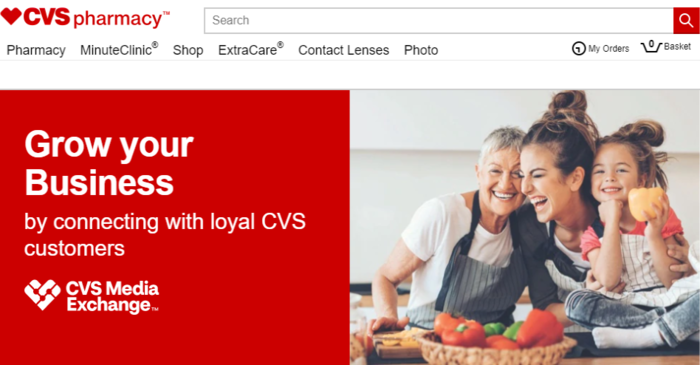
CVS is one of the first brands to launch its own retail media network, dubbed the CVS Media Exchange (CMX).
CMX allows brands to place their products on channels informed by CV’s first data. This includes off-site as well as on-site targeted ads. When it comes to customer data, CVS has the edge over most retail ad networks, thanks to their:
- Close to 10,000 locations nationwide
- Decades of consumer data through their loyalty programs
- High-traffic online platforms
With this huge data bank at their disposal, advertisers are better equipped to create personalized ads and place them strategically for optimum visibility.
Walgreens
Walgreens is not green behind the ears when it comes to executing digital ad campaigns for other brands.
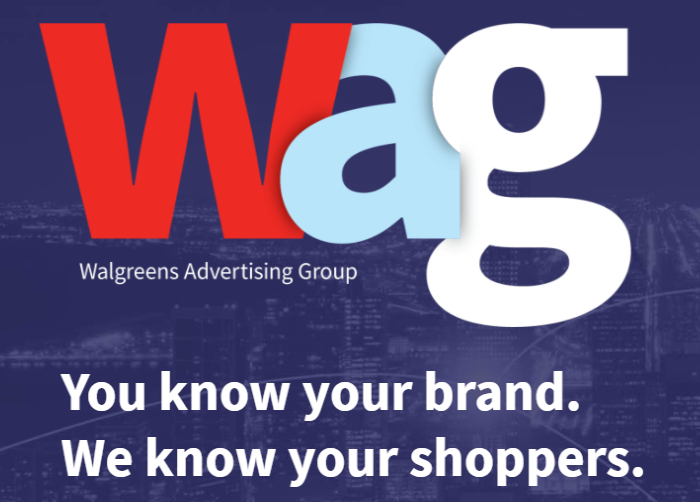
So it’s no surprise that Walgreens has decided to formalize things and launch a retail media network called Walgreens Advertising Group (Wag).
Wag offers ad placement on their online store, in their brick-and-mortar stores, as well as on other digital platforms such as social media and Google.
Amazon
Retail and e-commerce giant Amazon is another brand that has mastered retail media and runs its own network.
It’s called Amazon Advertising.
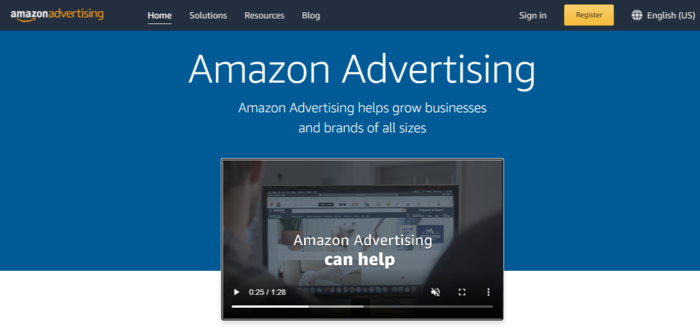
Thanks to its massive digital footprint, Amazon can offer brands more in terms of the kind of campaigns they want to run. It also gives them access to one of the world’s largest customer data banks as well as a massive audience (over 200 million in the U.S alone).
Amazon Advertising works much like Google Ads. Brands that want to be found have to bid for keywords and pay each time their ad is clicked.
Retail Media Advertisers
Since most retailers don’t have the infrastructure and know-how to run retail media networks, how do they pull it off?
Most of them get external help. Here are some of the top retail media advertisers who are powering the retail media movement:
Criteo
Criteo is one of the leading retail media advertising platforms around. They make it easy for media buyers to purchase retail media with ease, thanks to their end-to-end service platform.
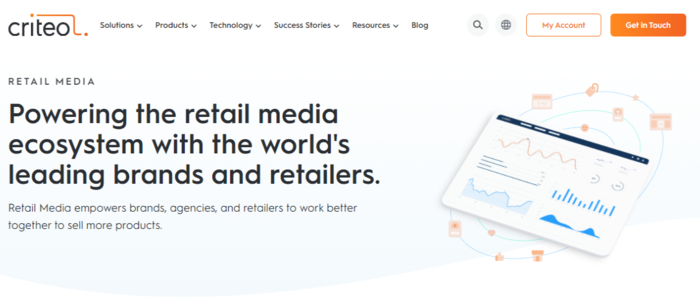
The platform gives brands and retailers full control of their campaigns and easy access to data and analytics. Robust APIs also allow you to use your marketing tool of choice.
One thing Criteo boasts of is its transparent platform. For retailers, this makes it easier to grow their retail media network, while brands have more flexibility when it comes to choosing the retailers they want to partner with.
Promote IQ
Another retail media advertiser that enables brands to advertise their products on retailers’ websites is Promote IQ.
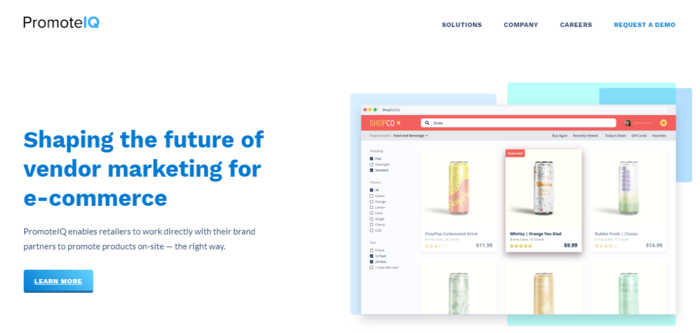
Acquired by Microsoft in 2019, Promote IQ gives retailers full control of the end-user experience. This helps make the retail media seamlessly blend in with the retailer’s website.
Promote IQ claims they can help retailers generate 5X their revenue by cutting out the middleman and working directly with brands through their platform. Promote IQ also provides automation capabilities to streamline and increase your campaigns’ effectiveness.
Brands get more visibility and higher conversions thanks to Promote IQ’s powerful data and analytics platform. This helps create hyper-targeted ads that resonate with shoppers, driving up conversions.
Elevaate
Another advertiser shaking up the retail media world is Elevaate.
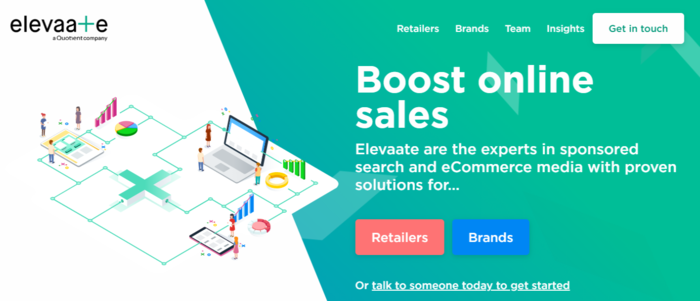
Elevaate understands the hassle retailers face setting up a retail media network. That’s why they designed a platform that’s as easy to set up as it is effective in generating revenue. With Elevaate, retailers can maximize their digital real estate profits without compromising their shoppers’ experience.
Elevaate promises increased visibility and high return on ad spend (ROAS) by offering precise targeting.
How to Create a Retail Media Network for Your Brand
So how can you create a retail media network to boost sales for your brand? If your brand has a large amount of traffic, consider using one of the tools above, like Criteo or Elevaate.
After all, they have the infrastructure in place to help your retail network up and running quickly. Which means you’ll have more time to spend on your business.
With most of them, the process is as simple as applying to join their program. Once approved, you upload your product feed, and the ad network does the rest.
Conclusion
The world is changing rapidly.
For businesses to succeed in the future, they need to adapt to the changing landscape and buyer behavior.
This is why you must consider the retail media bandwagon if you haven’t yet — either by creating your own or advertising on major sites like CVS and Walgreens.
Not only will it give you an edge over the competition, but it will help you tap into audiences you can’t reach on your own. It will also help you maximize your marketing budget, ensuring you get the best ROAS.
Have you used retail media for your brand? What was your experience like?
The post What is a Retail Media Network? appeared first on Neil Patel.

